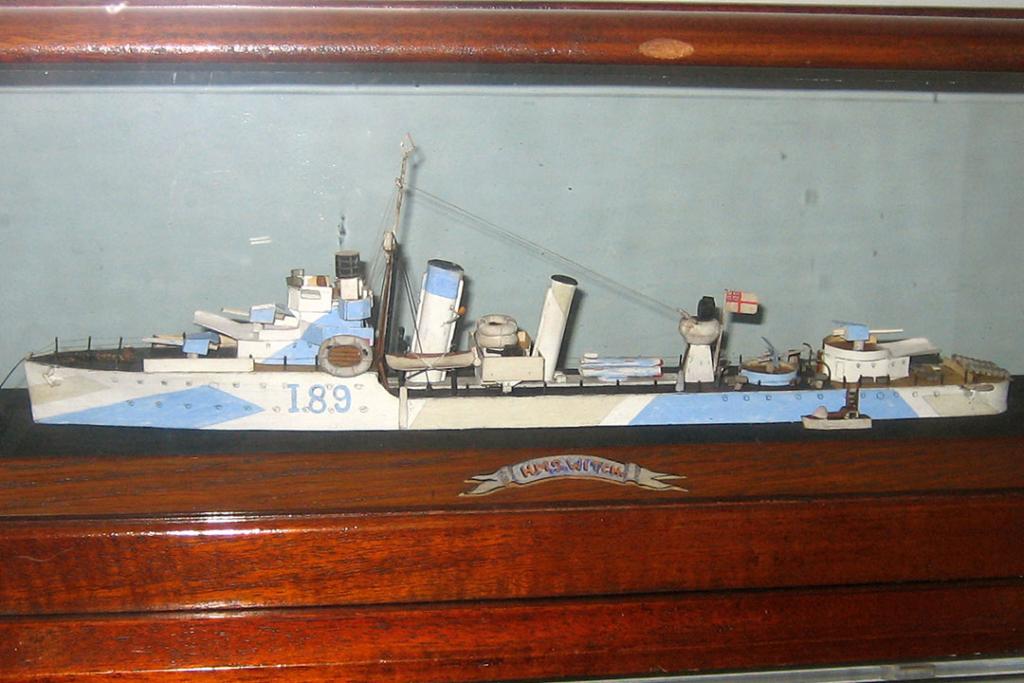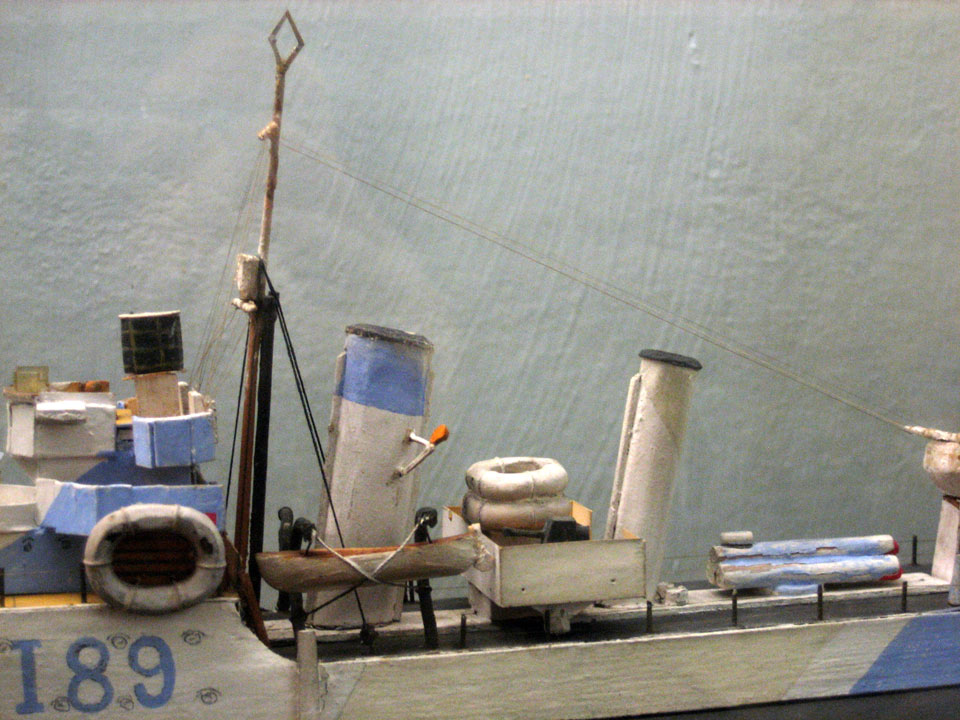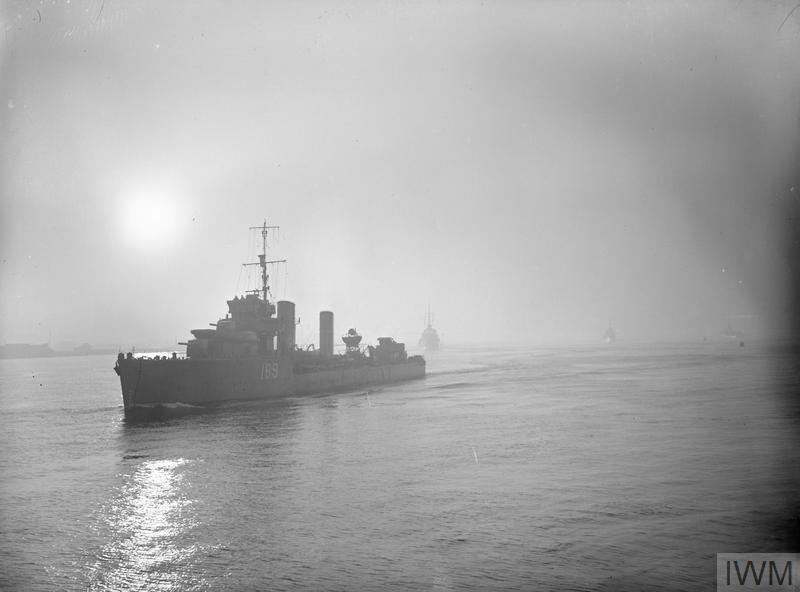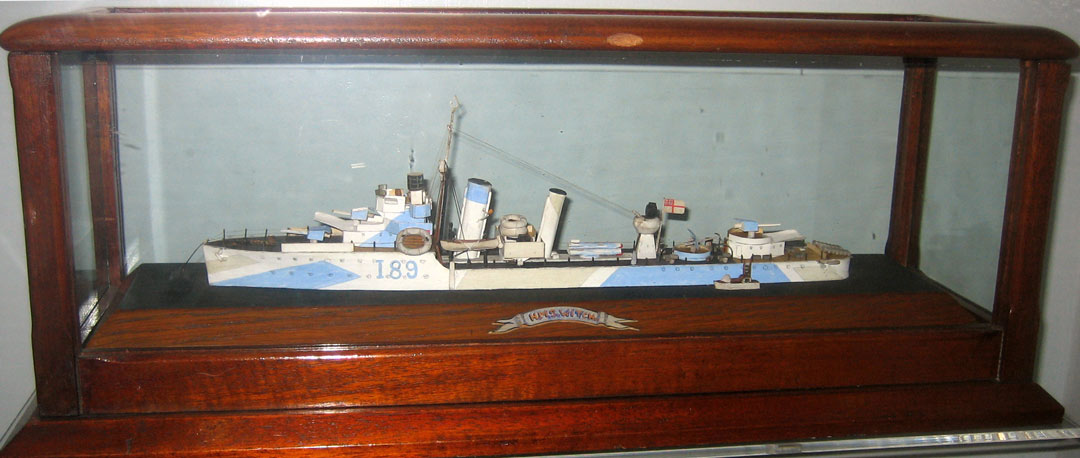‘Hair-raising’ model made in top secret underground bunker
It’s that time of year again and a chill caused by more than just autumn winds is upon us. Halloween is bearing down fast with its usual accompaniment of pumpkins, ghosts, and of course witches! Here is the story of a slightly unusual witch that you can see in the Maritime Museum's Battle of the Atlantic gallery.

The ship model you can see here may look fairly innocuous but this is the Royal Naval Destroyer HMS Witch and it’s rigged with real human hair! It’s not however hair from a witch, but from a Wren.
Wrens was the colloquial term for members of the Women’s Royal Naval Service (WRNS). Founded in 1917 and only disbanded in 1993 when the women were officially integrated into the Royal Navy, the WRNS were women who supported the Navy in mostly shore based roles and played an important part in both the First and Second World Wars. In fact arguably Wrens started out by doing what women once persecuted as witches had done before them; the Wrens were stepping outside of the roles society had deemed suitable for women, demonstrating an interest in dark arts such as telecommunications, engineering and cryptography. At the founding of the WRNS women couldn’t even vote and their work in the services during the First World War, alongside that of many other women in factories, in hospitals, and on the land, is credited with having a hugely important impact in gaining women’s first steps towards universal suffrage in 1919.

If you look closely you can see the fine hairs making up the model's rigging in this picture.
We don’t know the name of the particular Wren that this hair came from but we do know that she worked at Derby House in Liverpool during the Second World War, along with the Surgeon from the Royal Naval Volunteer Reserve (RNVR) who made the model. Derby House was the Western Approaches Command HQ during the Second World War. Here, deep underground in a top secret bombproof shelter, Royal Navy and Airforce staff, including Wrens, worked to track German naval forces that threatened Allied shipping. Their work was invaluable in keeping open the shipping lanes that were a lifeline to wartime Britain.
The model itself shows the HMS Witch in dazzle paint, a form of wartime camouflage that sounds a little like witchcraft itself. Dazzle paint involved covering vessels in geometric designs in a variety of bright colours in order to make them more difficult to track and identify. The idea is that the patterns worked to break up the distinguishing lines of the ships, making it much harder for enemy vessels to tell what kind of ship they were looking at, how large it was, or even which direction it was moving in. It’s an optical illusion, a magic trick any witch would be proud of.

The Royal Naval destroyer HMS Witch, photographed off Plymouth during her wartime service. © IWM (A 1453)
If you’d like to see the model for yourself it’s on display in the Maritime Museum’s Battle of the Atlantic gallery, so why not come visit us around Halloween when you can see the Witch and even learn more about the mysterious dazzle paint in our Lusitania gallery.

Ship model of HMS Witch. Accession number MMM.1993.69
